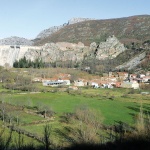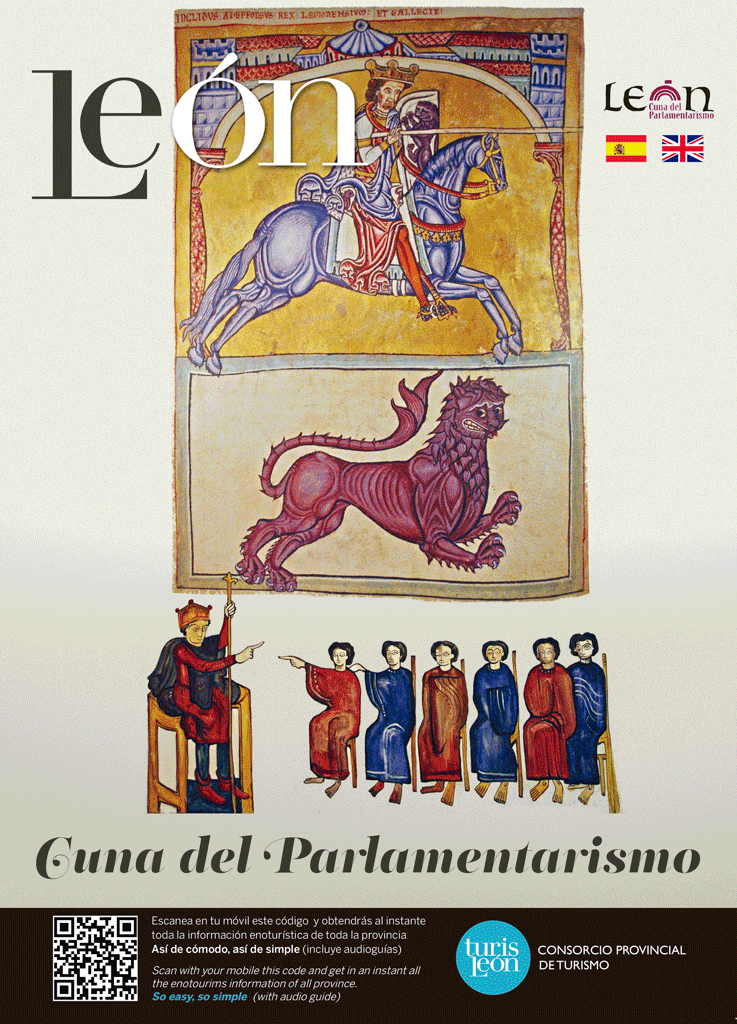RUTA TRANSCANTÁBRICA (TRANS-CANTABRIAN ROUTE)
The Tran-Cantabrian Route runs through parts of the Leonese province that show their attractive natural settings, historic buildings and important industrial landmarks. It begins in La Espina and finishes in Caboalles de Arriba. These places have traditionally been mining areas.
From La Espina in the Northeast of the province of León, the route starts on the CL626 road to get Puente Almuhey, an ideal place to stop and contemplate its landscapes before getting to Cistierna, a council where Esla River flows and where Peñacorada massif is located. Here it is well worth visiting its old church and tasting the famous Lazos de San Guillermo (SEE THE SECTION FLAVORS FROM LEÓN). Leaving Cistierna, the route goes to Sabero, with its Mining Museum and Steel Museum, located in an impressive archeological industrial site, the first blast furnaces of Coke carbon in Spain, and all the factories from the mid 20th century, including the mining suburb whose houses were built following an English style from the beginning of the 20th century. Next to it, in the town of Sahelices de Sabero a small natural jewel is located, Las Cuevas de Valdeajajo (Valdeajajo Caves). The route goes through Olleros de Sabero to Boñar.
Then, La Vecilla de Curueño, a historical complex, preserves a fortified medieval tower that belonged to the Leonese Condes de Luna (Counts of Luna). It also has a church from the 18th century featuring a Baroque altarpiece.
MONTAÑA CENTRAL (CENTRAL MOUNTAIN)
Leaving La Vecilla, the traveller can get to Matallana de Torío after passing by villages such as La Valcueva and El Fenar. Matallana de Torio is the gate to access Las Hoces de Vegacervera (“The gorges of Vegacervera) and it is near Cueva de Valporquero (Valporquero Cave).
La Robla is a small industrial and mining town. It is the beginning of the route to La Magdalena, a beautiful mountain town which leads to the three Biosphere Reserves: Omaña-Luna, Babia y Laciana. These reserves will surprise the traveller in every point of the way.
Los Barrios de Luna is the first village of the Luna region. It is also right next to a dam, considered one of the most important tourist destinations in the area. In this place, the visist to the Museo del Pastor (Shepherd’s Museum) is a must.
The Trans-Cantabrian Route goes through Sena de Luna, an excellent place to go hiking and to unhurriedly enjoy the impressive nature. The route becomes more remarkable in councils such as San Emiliano and Cabrillanes. Further on, the traveller gets to Laciana, a region rich in environmental and hunting resources that has made a living out of coal. The towns of Villaseca de Laciana and Villablino are an obligatory stopover on the way to Caboalles de Arriba, village where the traveller can visit the Centro de Interpretación del Urogallo (The Interpretation Center of the Capercaillie/Grouse).
Only 13km far from the last stop, there is a ski resort in Leitariegos Mountain. Its beautiful landscape has gained fans among winter sports lovers.

